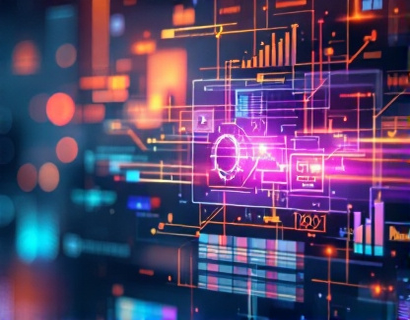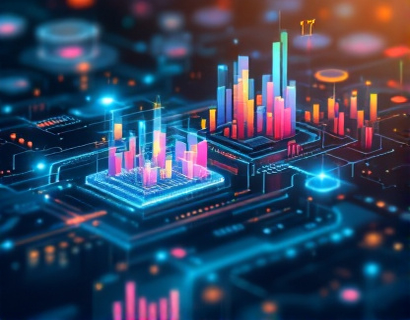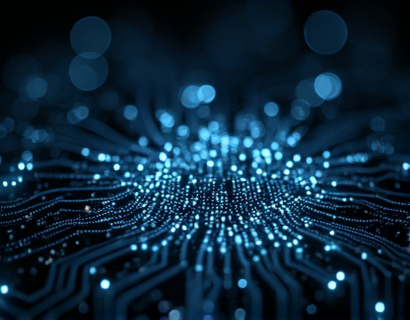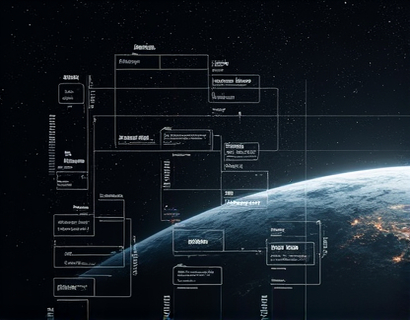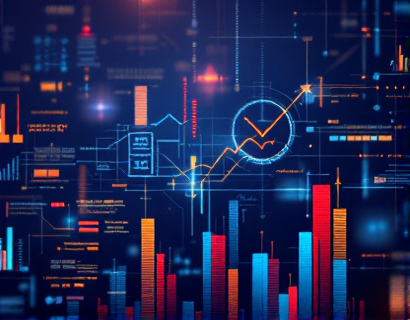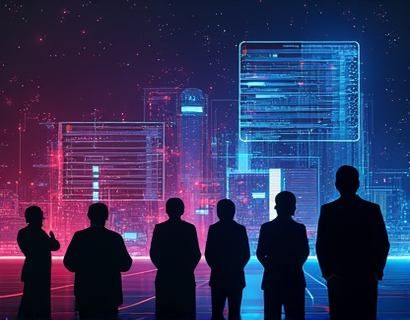Decentralized Productivity Enhanced: Leveraging AI and Crypto for Next-Gen App Solutions
The digital landscape is rapidly evolving, driven by advancements in artificial intelligence and blockchain technology. This convergence is giving rise to a new era of decentralized applications that promise to revolutionize productivity for tech professionals and early adopters. By harnessing the power of AI and cryptocurrency, these next-gen app solutions are not only streamlining tasks but also boosting efficiency in unprecedented ways. This article delves into how decentralized productivity is being turbocharged through the integration of AI and crypto, offering insights for those keen on the intersection of technology and innovation.
The traditional centralized models of software and application development are being challenged by decentralized alternatives. Decentralized applications, or dApps, operate on blockchain networks, eliminating the need for intermediaries and central authorities. This shift brings numerous benefits, including enhanced security, transparency, and user control. For productivity tools, decentralization means that applications can be more resilient, less prone to single points of failure, and more aligned with user needs without the constraints of centralized governance.
Artificial intelligence, on the other hand, is transforming how these decentralized applications function. AI can optimize processes, provide intelligent recommendations, and automate repetitive tasks, all of which are crucial for enhancing productivity. When combined with the decentralized architecture, AI can analyze data from multiple sources across the network, offering insights and improvements that would be impossible for centralized systems to achieve.
Decentralized Productivity: The Core Concept
Decentralized productivity tools are designed to operate on a distributed network, where data and applications are not stored in a single location but across multiple nodes. This distribution ensures that the system remains functional even if some nodes fail. For users, this means higher uptime and reliability, critical factors in a productivity environment.
One of the key features of decentralized productivity tools is their ability to facilitate peer-to-peer interactions without the need for a central authority. This not only reduces costs associated with maintaining servers and infrastructure but also empowers users by giving them direct control over their data and applications. In a decentralized model, users can choose how and with whom they share information, enhancing privacy and security.
AI in Decentralized Productivity
AI plays a pivotal role in enhancing the functionality of decentralized productivity tools. Machine learning algorithms can analyze user behavior and preferences to provide personalized experiences. For instance, an AI-driven calendar application can learn a user's scheduling patterns and suggest optimal meeting times, taking into account the availability of participants across different time zones.
Moreover, AI can automate routine tasks, freeing up users to focus on more strategic work. In a decentralized setting, these automated processes can be executed across the network, ensuring that tasks are completed efficiently and securely. For example, smart contracts can be programmed to trigger actions based on specific conditions, such as automatically sending notifications or updating task statuses when certain milestones are reached.
Cryptocurrency and Decentralized Economics
Cryptocurrency is integral to the decentralized ecosystem, serving as a medium of exchange and incentivizing participation. In the context of productivity tools, cryptocurrency can be used to reward users for contributing resources or completing tasks. This creates a token-driven economy where users are motivated to engage actively and contribute to the network's growth and efficiency.
Tokenization also enables the creation of decentralized marketplaces where users can buy, sell, and trade services directly. For productivity tools, this means that developers can monetize their applications through token sales or subscription models, ensuring sustainable development and continuous improvement. The use of blockchain ensures that transactions are transparent and tamper-proof, building trust among users.
Enhanced Collaboration and Security
Decentralized productivity tools significantly improve collaboration among team members. Since data is distributed across the network, team members can access and work on files in real-time, regardless of their location. This real-time collaboration is enhanced by AI, which can manage version control, suggest collaborative actions, and even predict potential conflicts before they arise.
Security is another area where decentralization and AI converge to provide robust solutions. Blockchain's inherent security features, combined with AI-driven threat detection, create a formidable defense against cyber threats. AI can monitor network activity for unusual patterns, detect anomalies, and respond to potential attacks in real-time, ensuring that user data remains secure.
Case Studies and Real-World Applications
Several projects are already demonstrating the potential of decentralized productivity enhanced by AI and cryptocurrency. One notable example is a decentralized project management tool that uses AI to optimize task allocation and resource management. The platform leverages blockchain to ensure that all changes and updates are recorded transparently, and smart contracts automate payment processes based on completed tasks.
Another application is a decentralized content creation and collaboration platform for writers and editors. AI algorithms help in suggesting edits, improving grammar, and even generating content drafts. The platform uses cryptocurrency to reward contributors based on their input and the quality of their work, fostering a community-driven approach to content creation.
Challenges and Future Prospects
Despite the numerous advantages, decentralized productivity tools face several challenges. One major hurdle is user adoption, as the concept of decentralization and blockchain technology is still relatively new and complex for many users. Education and user-friendly interfaces are crucial to overcoming this barrier.
Scalability is another issue, as blockchain networks can struggle with high transaction volumes. However, ongoing developments in blockchain technology, such as layer 2 solutions and more efficient consensus mechanisms, are addressing these scalability concerns.
The future of decentralized productivity looks promising, with continuous advancements in AI and blockchain. As more developers and businesses recognize the potential of this combination, we can expect a surge in innovative applications that further enhance productivity and efficiency. The integration of augmented reality, Internet of Things (IoT), and other emerging technologies will only add more dimensions to decentralized productivity solutions.
In conclusion, the fusion of AI and cryptocurrency is paving the way for a new generation of decentralized productivity tools. These tools not only streamline tasks and boost efficiency but also empower users with greater control and security. For tech professionals and early adopters, embracing these innovations can provide a significant edge in the digital age.










